The spiritual link between yoga and addiction recovery is elucidated in the eleventh step of the famed Twelve Steps of Alcoholics Anonymous, which states, “Sought through prayer and meditation to improve our conscious contact with God as we understood God, praying only for knowledge of God’s will for us and the power to carry that out.” Regardless of religious background or belief, recovery requires devotion to something higher. There is a veritable link between eight limbs of yoga and the principles of the Twelve Steps, such as the shared emphasis on discipline, brotherly love, and integrity, to name a few.
Flexibility, balance, concentration, strength, and meditation are honed while on the yoga mat and can fluidly be applied in a strong recovery program “off the mat.” To “bend, not break,” to learn a harmony of vulnerability and security, to develop the strength to assert oneself and the perspective to let go of the need for control when circumstances become overwhelming—these are the tenets of emotional sobriety.
Related: 16 Incredible Stories of Healing Through Yoga
Pranayama (breathing) techniques assist in regulating the nervous system, increasing oxygen supply, detoxifying the body, and improving mental clarity, all of which contribute to a healthy sober mind. Postures recall principles of the Twelve Steps: Child’s Pose represents the process of surrender, of letting go, of prostration and humility before something greater than ourselves; Warrior postures indicate development of great strength before ostensibly insurmountable obstacles; balancing postures bring into alignment the right and left hemispheres of the brain and sides of the body; and stretching poses help to expand the capability of the yogi to reach beyond perceived limits.
The sanctity and unity perpetuated by the Twelve Step fellowship is mirrored in a yoga classroom. Individuals join mind, body, and spirit together for the purpose of supporting one another in the quest toward greater self-knowledge, empowerment, and enlightenment. The energy of each participant affects the group dynamic, and practitioners are encouraged to embrace conscious contact with powers both higher and within themselves.
This sequence mirrors the Twelve Step process to help us on the road to sobriety and stability.
Step 1: “We admitted we were powerless over alcohol and that our lives had become unmanageable.”
Child’s Pose. Come onto the hands and knees and sit down toward the heels, touching the big toes together and allowing the knees to spread out to the width of the mat. Stretch the arms out directly in front of the body, shoulder width apart, with palms down and fingers spread. Feel the symbolic gesture of prostration, humility, and surrender as the third-eye center rests atop the mat.
Step 2: “Came to believe that a power greater than ourselves could restore us to sanity.”
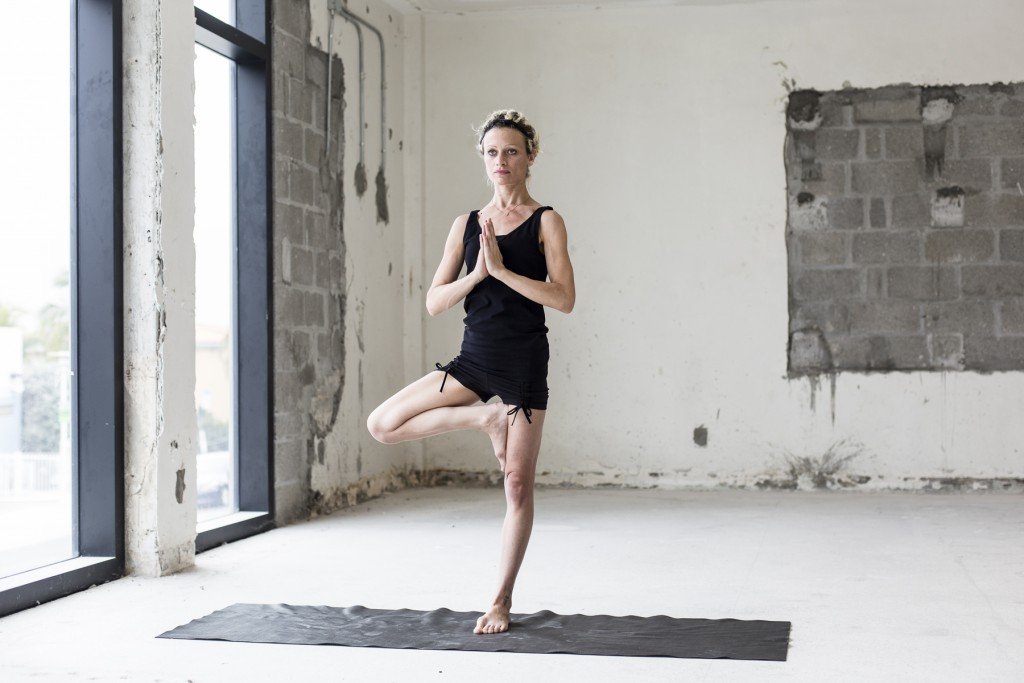
Tree Pose. Begin in a standing position, toes and heels touching and hands resting at the sides. Transfer the weight of the body into the right leg and gently lift the left leg off the ground, placing the left foot onto the inner right calf or thigh, avoiding the area of the knee. The left knee should point outward as the tailbone scoops under and hips are squared, even with one another. Feel the strong right leg “rooting” down into the earth, as the spine stands straight and the head and torso “reach up” high toward the ceiling or sky. The arms may reach out to the sides of the body or above the head, and the fingers may take a mudra; alternately, the hands may come to prayer at heart center. Integrate this opposition of force into the body in order to achieve balance of body and blend of groundedness with levity. Repeat with weight transferred to the left leg.
Step 3: “Made a decision to turn our will and our lives over to the care of God as we understood Him.”
Split Variation. Come to the hands and knees, and gently stretch one leg out forward, toes flexed and heel reaching toward the front of the mat. Walk the hands back slightly, and gently “bow” forward over the outstretched leg so as to receive a stretch in the hamstring. Keep the hips evenly squared with one another, as the front foot remains flexed back toward the torso. Feel the outstretched leg begin the “leap” as it stretches toward possibility.
Full Split. Take the variation as described above, and with use of the hands for balance and self-adjustment, stretch the opposite leg backward, behind the body, as far as you can comfortably split the legs. The back leg should remain parallel with the sides of the mat and the top of the back foot on the floor directly behind the ankle, all five toes touching the mat. Keep the front toes flexed as the hips, always squared off as best as possible, gently sink toward the mat with gravity. The hands may be used for stability and support or, if both legs are fully outstretched on the mat, may come to a prayer at heart center. Gaze remains forward. Feel the “leap” that the body symbolically takes from one direction into another, of infinite possibility.
Step 4: “Made a searching and fearless moral inventory of ourselves.”
Begin the practice by gazing into the eyes through a mirror. These are the eyes of the teacher. Feel the self-acceptance and introspection that accompanies the lock of the eyes with themselves. Alternately, in either Standing Mountain Pose (Tadasana) or Cross-Legged Seated Pose (Sukasana), the hands may come to a prayer at heart center, as the eyes gaze down at the tips of the fingers. Feel this point of focus (drishti) unite the self with the self, a true fearless look into the soul.
Step 5: “Admitted to God, to ourselves and to another human being the exact nature of our wrongs.”
Chant the Sound of Om. Come to a comfortable seated position, either with legs crossed, half-lotus, or full-lotus. With the spine straight, vertebrae evenly stacked on one another, and chin parallel to the ground, feel the throat open, the lips open, and the tongue move as the body releases the sound of one “Aum” or “Om.” Allow the sound to permeate the body’s consciousness, and allow the vibrations to set intention to higher purpose.
Related: A Beginner’s Guide to Essential Sanskrit Mantras
Step 6: “Were entirely ready to have God remove all these defects of character.”
Camel Pose. Come to stand on the knees, ensuring that the knees are directly below the hips. The tailbone is tucked under and hips face squarely toward the front of the mat. In the case of sensitive knees or injuries, a thin blanket may be placed under the knees, or the mat may be doubled over under the knees. Place the hands on the hips, fingers sliding down the back as though they will go into jeans’ back pockets. Gently begin to press the hips forward with coaxing of the hands, as the head drops back, all tension released from the neck. This may be the entirety of the posture, or, for flexible practitioners, one hand at a time may drop to the heels, hands taking hold of the heels in a cupping position with all five fingers touching. The head is entirely dropped back and the hips begin to press forward as the chest rises toward the ceiling or sky. Feel the openness and vulnerability coursing through the body as the throat opens and the heart center is exposed, welcoming wisdom and divinity.
Step 7: “Humbly asked Him to remove our shortcomings.”
Standing Forward Fold. From Standing Mountain Pose (Tadasana), gently fold the torso forward and reach the hands as far as they will comfortably touch on the legs. The hands may reach for the backs of the shins or the heels; they may also reach toward the toes, taking the big toes with peace-sign fingers or sliding fully underneath the feet so that the toes touch the wrists. In all variations, the legs remain straight, a slight bend in the knees so as to mitigate strain on the back, and the weight shifts forward into the toes of the feet, heels remaining on the ground. Feel the body “close in on itself” as this posture of safety and security symbolizes humble prostration and the ultimate surrender to what the universe has to offer.
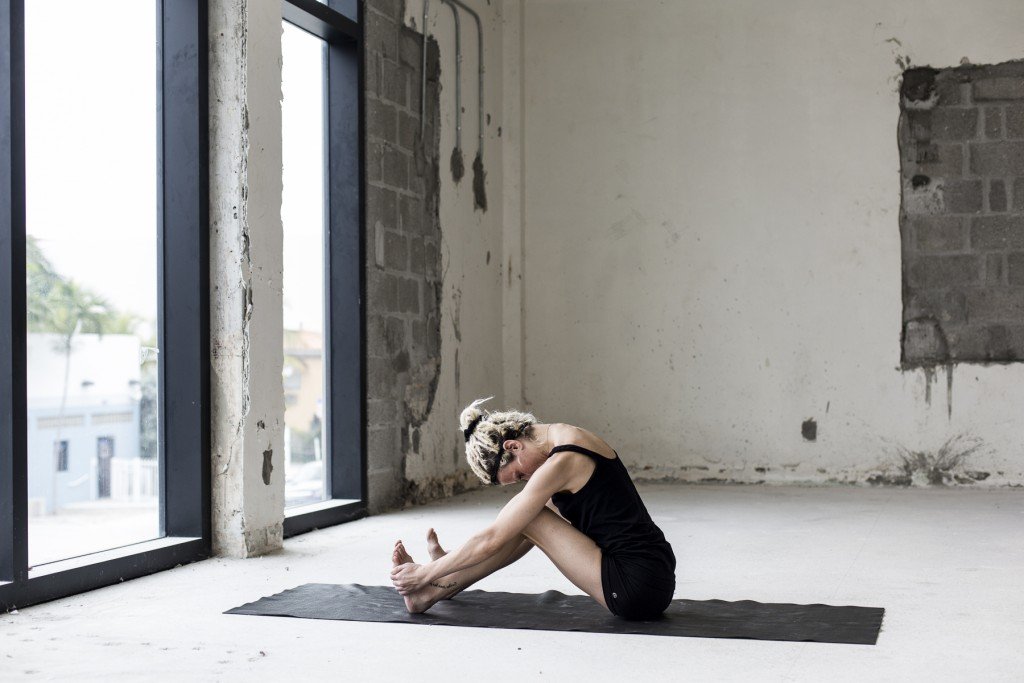
Seated Forward Fold. All guidelines from variation one apply; however, this is performed from a seated position in which the legs are outstretched in front of the body, toes and heels touching. In this variation, as the torso gently folds, the hands will come to rest on the shins, or the peace-sign fingers may take hold of the big toes. The neck releases as the head drops forward, consistent with the posture of humility.
Step 8: “Made a list of all persons we had harmed and became willing to make amends to them all.”
Warrior I. Stand in Mountain Pose at the top of the mat with the spine straight, tailbone tucked, and all four corners of the feet rooted firmly into the mat. In one graceful motion, step the left leg back approximately three to four feet, depending upon height. The left foot should land directly behind the left hip, foot at a 45-degree angle so that the toes, flat to the mat, point “northwest.” Squaring off the hips again, gently sink into the right knee such that the knee forms a 90-degree angle and the knee is directly over the ankle. The heels should not be directly in one line so it may be necessary to step the right foot slightly farther to the right. The right foot remains planted, all five toes pointing forward. In one fluid motion, raise the arms out toward the front of the mat so that they are perpendicular to the ground. Take a moment to draw the shoulders into their sockets, and in another fluid motion, raise the arms above the head, hinging at the shoulders. The hands may remain here or come together in a prayer formation above the head. The head remains facing forward, chin parallel to the earth. Feel the surge of strength, power, and glory throughout the self as the right thigh works to hold the body in place and the left leg straightens to stabilize the body, knife edge of the left foot rooted fiercely into the mat.
Step 9: “Made direct amends to such people wherever possible, except when to do so would injure them or others.”
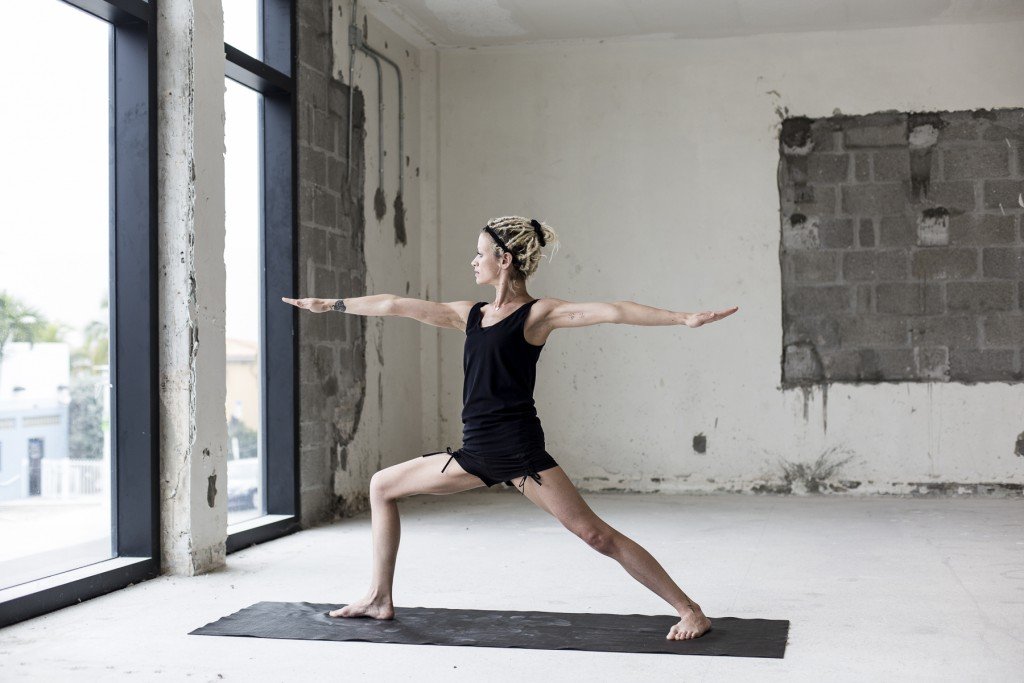
Warrior II. Follow the instructions provided for Warrior I. In one fluid motion, pivot the torso to face the left-hand side of the mat and bring the arms down, outstretching them so that the right arm reaches toward the front of the mat and the left arm reaches toward the back. Arms should remain in one line, parallel to the earth, as the shoulders relax and tailbone remains tucked. Sink deeper into the right knee as the gaze moves to the right fingertips. Feel the vibrations of movement throughout the body as the eyes gaze toward the horizon over the fingers, the right knee sinks even further into this lunge, the left leg works harder to stabilize the body, and the arms serve as delicate reminders that we find our balance, our center, through opposing forces.
Step 10: “Continued to take personal inventory and when we were wrong, promptly admitted it.”
Vinyasa Flow. Begin standing in Mountain Pose at the top of the mat. All four corners of each foot are rooted firmly into the earth. On an inhale, arms extend out from the body, sideways, until palms touch above the head. On an exhale, arms swan dive out to the aided of the body as the torso folds forward and head bows, finger tips reaching the shins or the mat in front of the toes. On an inhale, the head rises, gaze directly forward and spine parallel to the ground. On an exhale, both palms plant flat to the mat and the legs step backward, so that the body is in a plank position, toes to the mat and shoulders over the wrists.
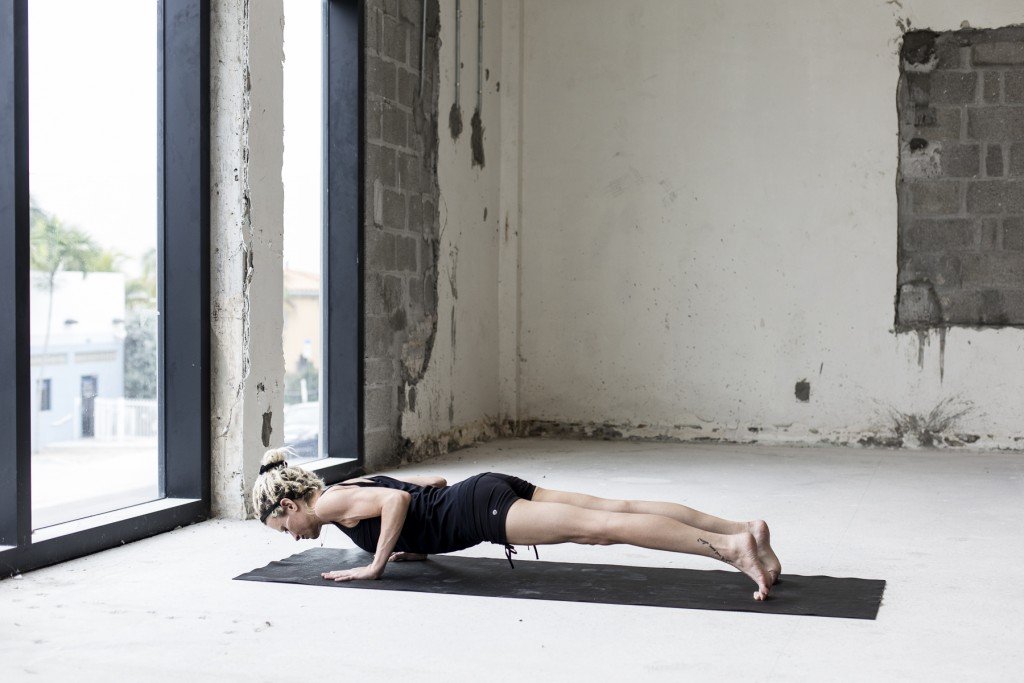 On an inhale, with the elbows remaining tucked in toward the ribcage, the body lowers until hovering approximately two inches off the mat. Gaze is forward as the body moves through this chaturanga.
On an inhale, with the elbows remaining tucked in toward the ribcage, the body lowers until hovering approximately two inches off the mat. Gaze is forward as the body moves through this chaturanga.
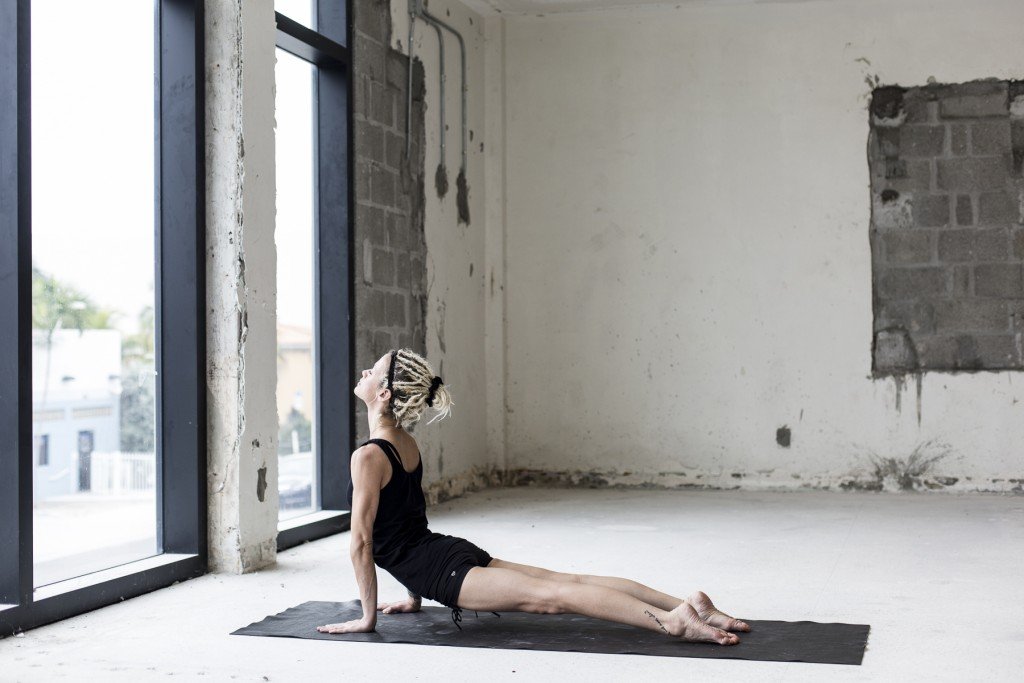
On an inhale, with the force of the arms, the torso rises, shoulders aware from the ears and neck extending with the gaze still forward, and arms are straight with perhaps a micro bend in the elbows. Tops of the feet are pulled to the earth as the body rises to Upward Facing Dog.
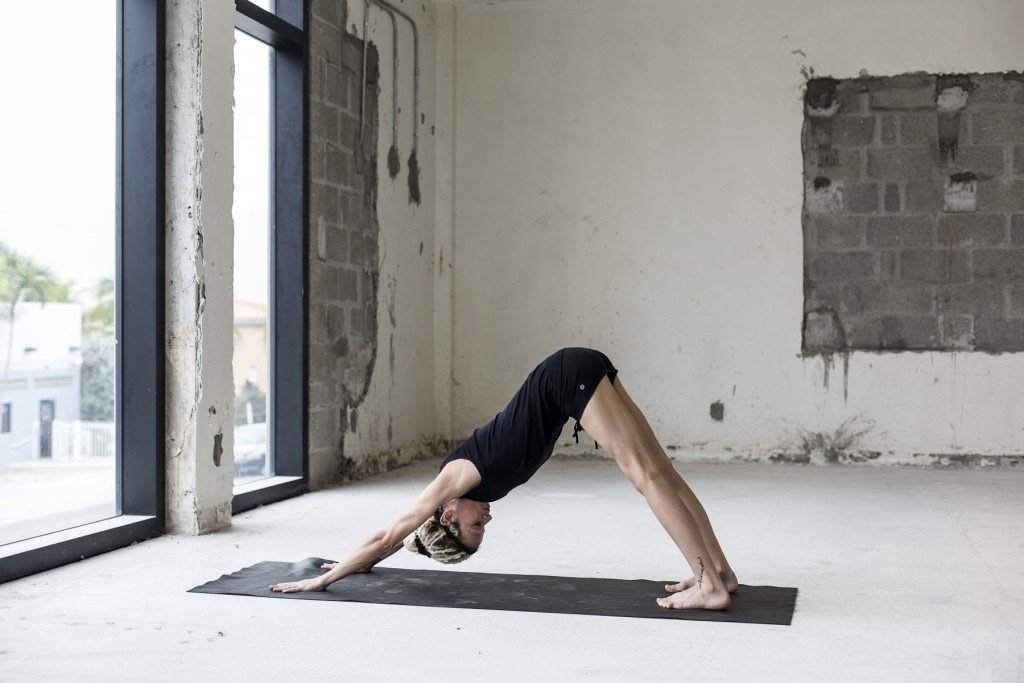
On an exhale, hands press into the mat, the tailbone and hips rise, and the body presses back to a Downward-Facing Dog (Arda Mukha Svanasana). The body resembles an upside-down letter “V” as the heels reach for the mat and the area between the thumb and index finger roots firmly down. Gaze is at the naval. Five deep breaths are taken in this position, after which both feet step to the top of the mat, head bowed. On an inhale, the gaze is forward and spine once rises parallel to the mat. On an exhale, the torso again bows forward and the head drops. On an inhale, arms sweep out to the sides, and in one fluid motion, the torso rises to resume Mountain Pose. Feel the salience of the breath as it breathes the body through this complete cycle, symbolic of the continuity with which opportunity for illuminating self-evaluation presents.
Step 11: “Sought through prayer and meditation to improve our conscious contact with God as we understood Him, praying only for knowledge of His will for us and he power to carry that out.”
Seated Meditation. Come to a comfortable seated position. Legs may be crossed, in half or full lotus, or sitting the buttocks directly on the heels, knees together and tops of the feet flat to the mat. Ensure that the torso is perpendicular to the mat, the spine elongated, and the chin parallel to the floor. The hands may rest comfortably, palms facing down on the knees or may come to a prayer at heart center. Gently close the eyes if comfortable doing so, and begin to focus on the breath, inhaling the word “let” and exhaling the word “go.” Should any thoughts arise, practice not attaching to them. Do not make an effortful “pushing away” of the thoughts, nor adhere to any thoughts; rather, allow them to float by like clouds on a windy day, the mind acting as observer. Feel the “conscious contact” available to mind, soul, and spirit with everything greater than oneself.
Step 12: “Having had a spiritual awakening as the result of these steps, we tried to carry this message to alcoholics and to practice these principles in all our affairs.”
Using the Alcoholics Anonymous tradition of “attraction, not promotion,” begin to practice yoga and, without coaxing others to join in this practice, observe as others indeed begin to gravitate toward this form of self-improvement that speaks for itself. Take the principles of balance, flexibility, focus, coordination, concentration, and meditation off the mat and into society.
Photos by Matthew Roy
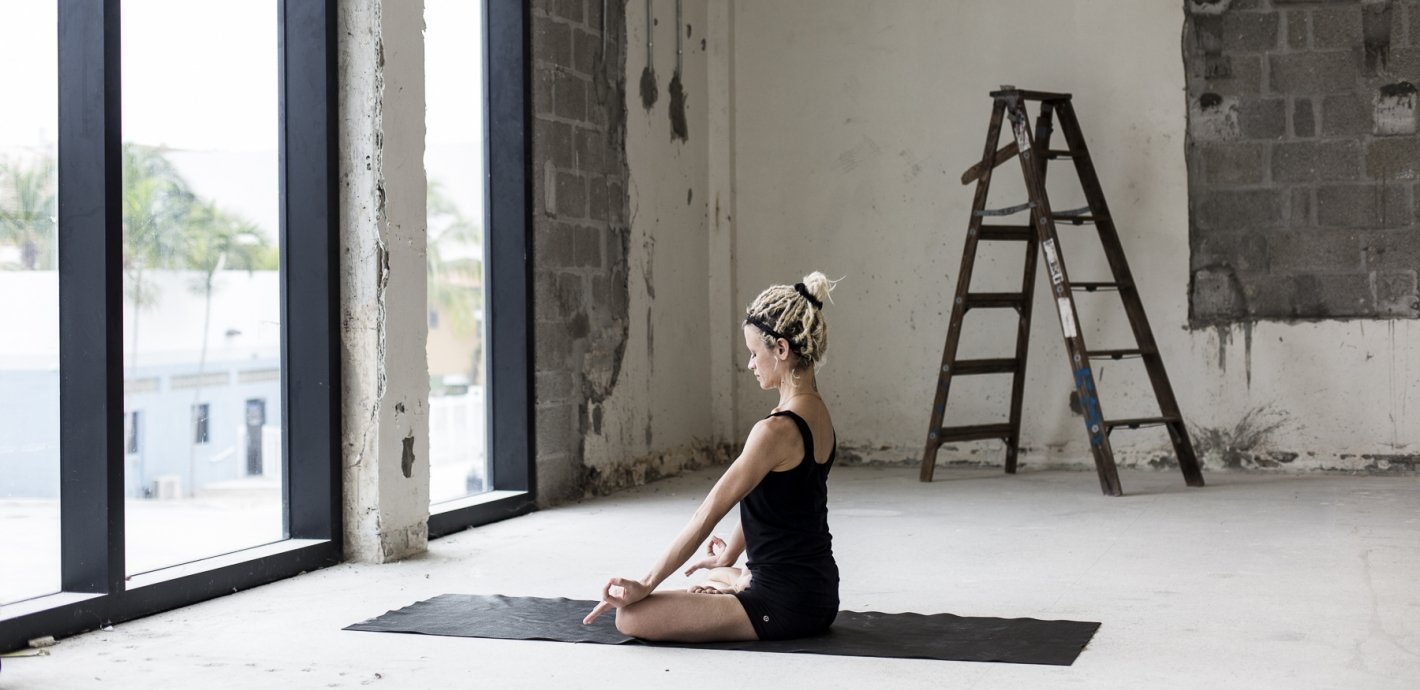

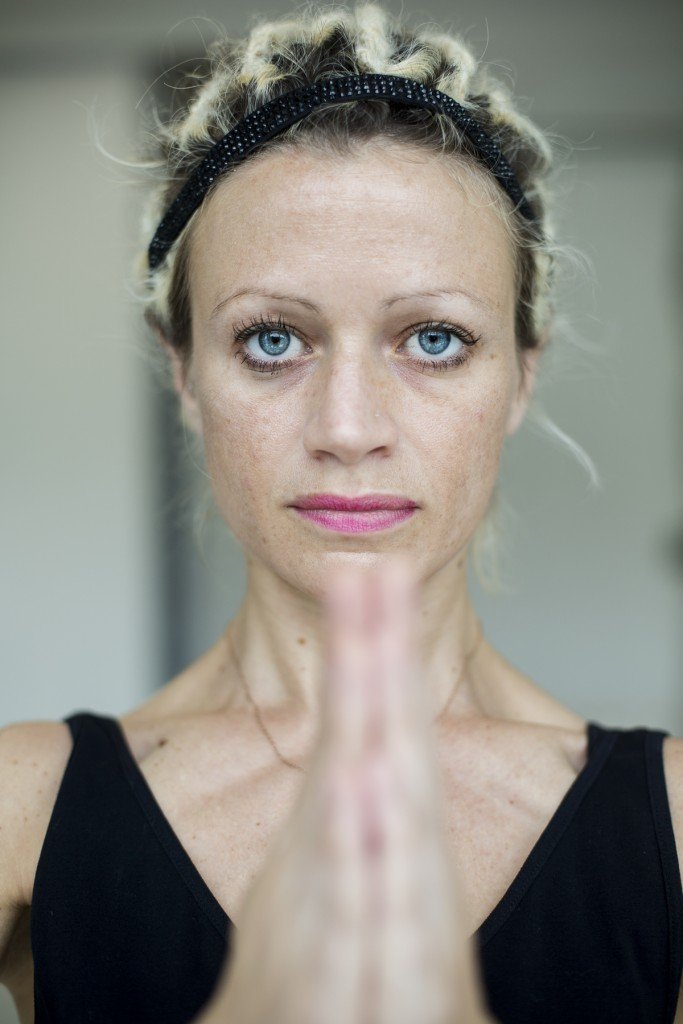
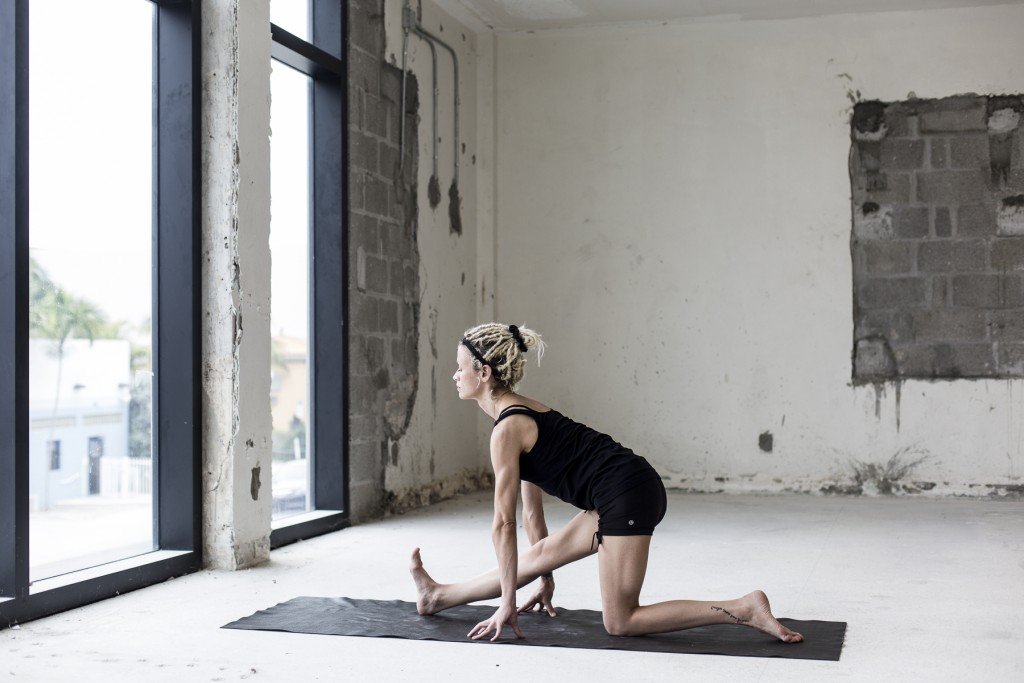
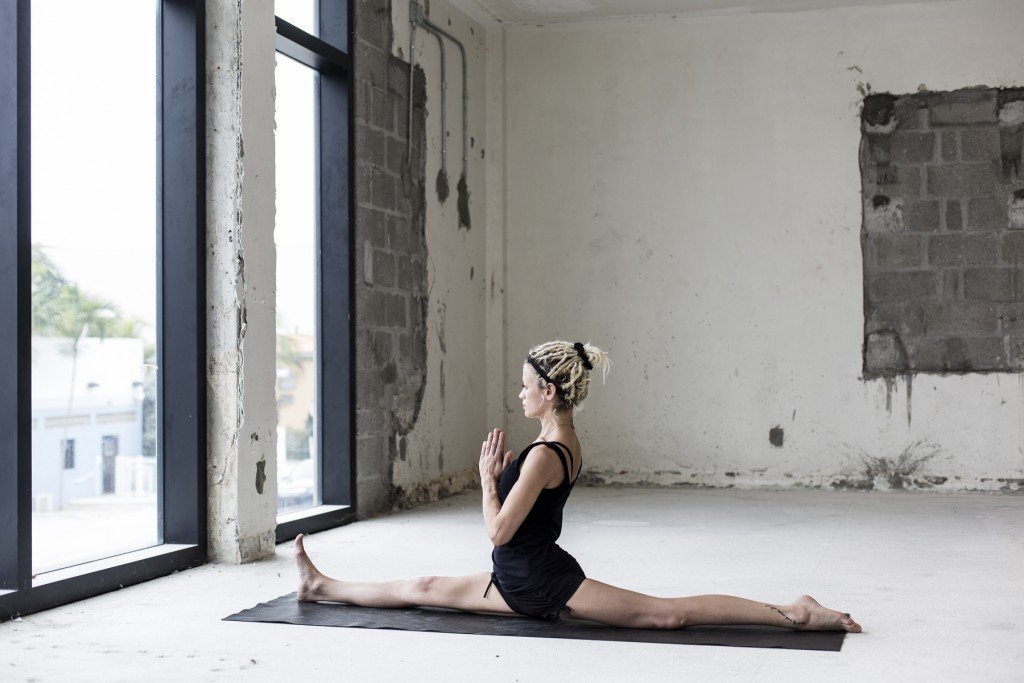
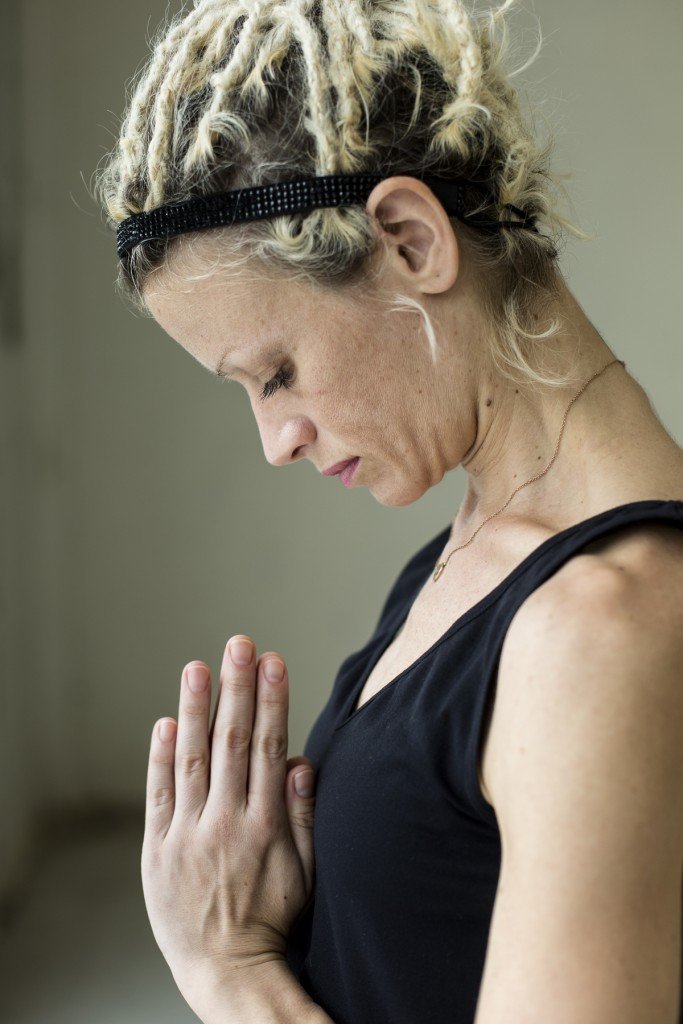
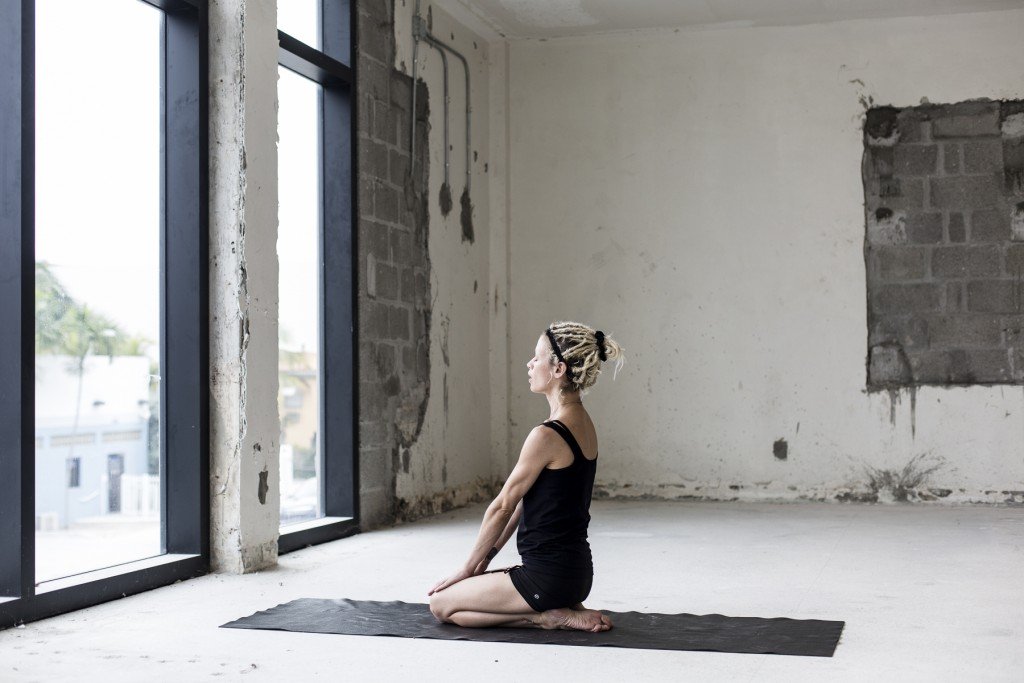
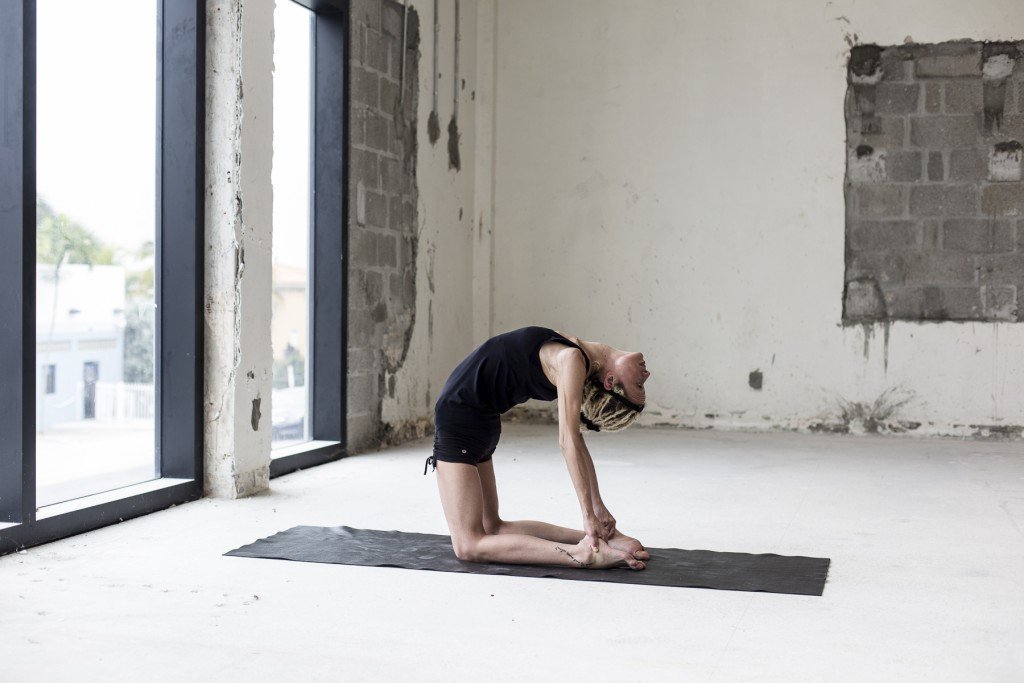
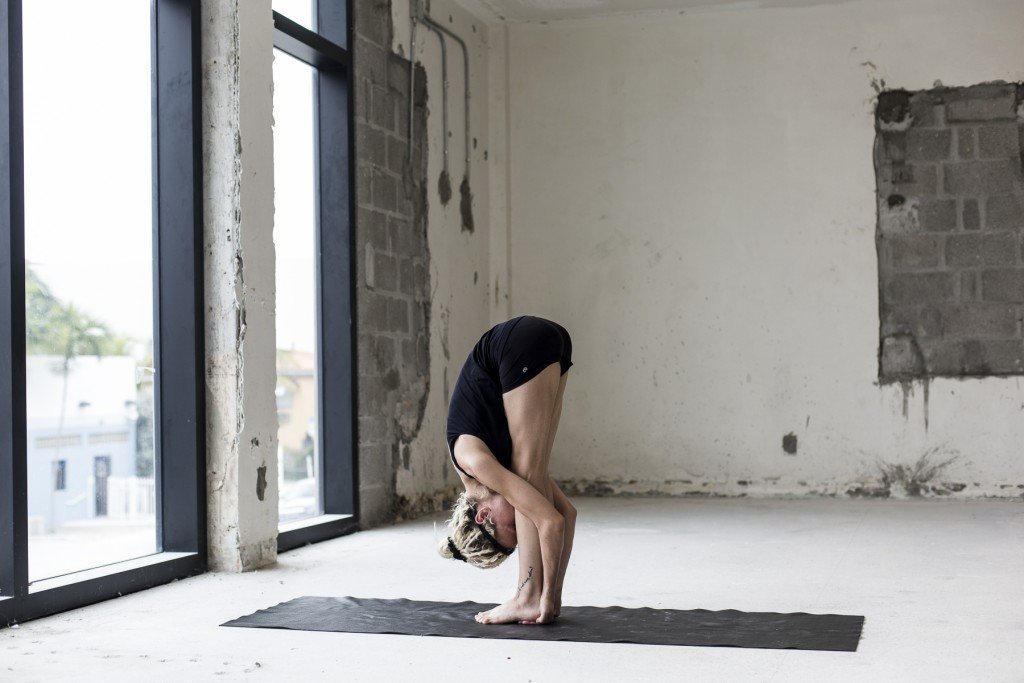
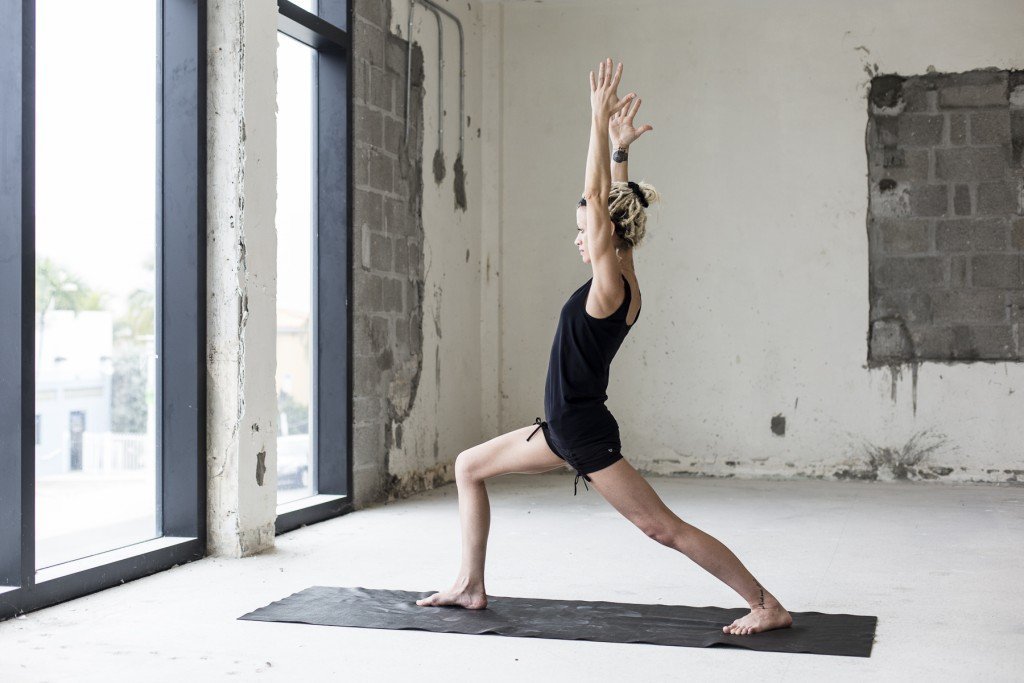
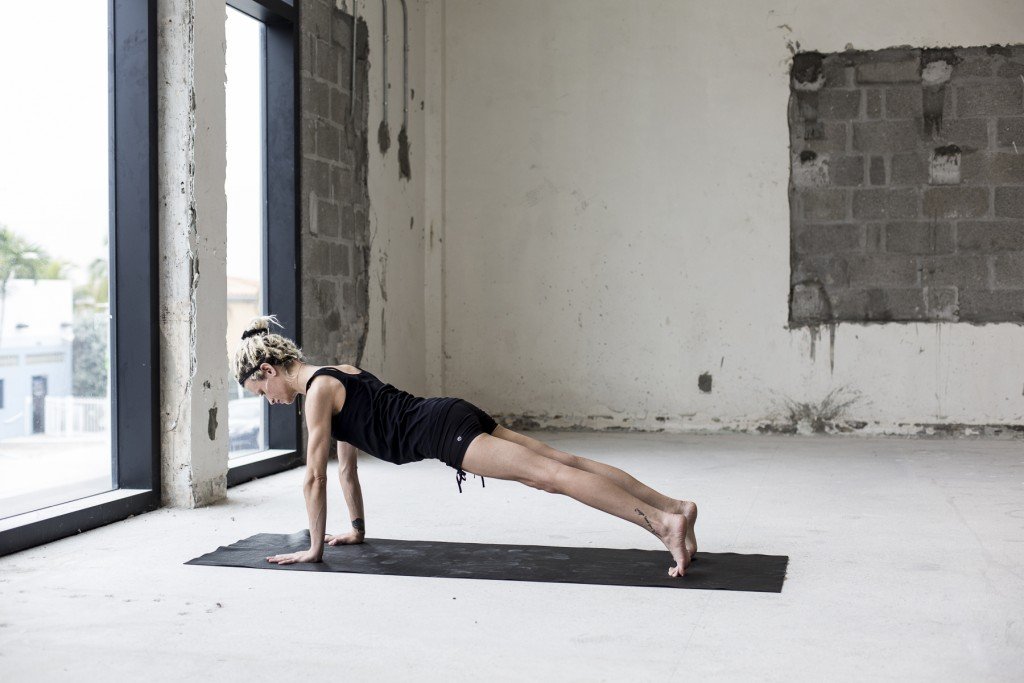
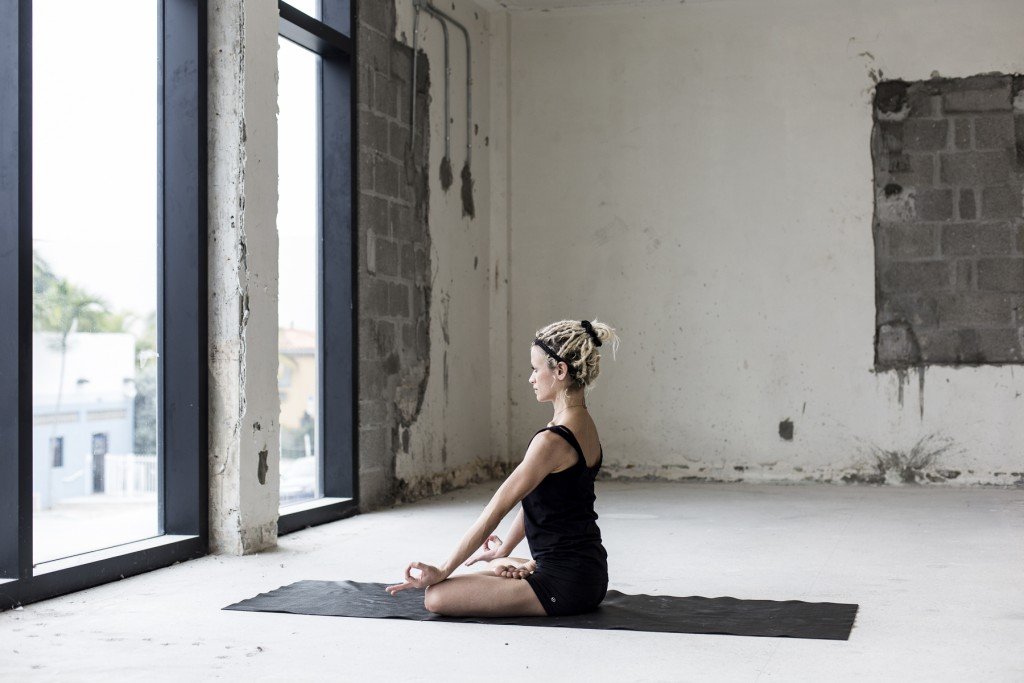







Comments (0)